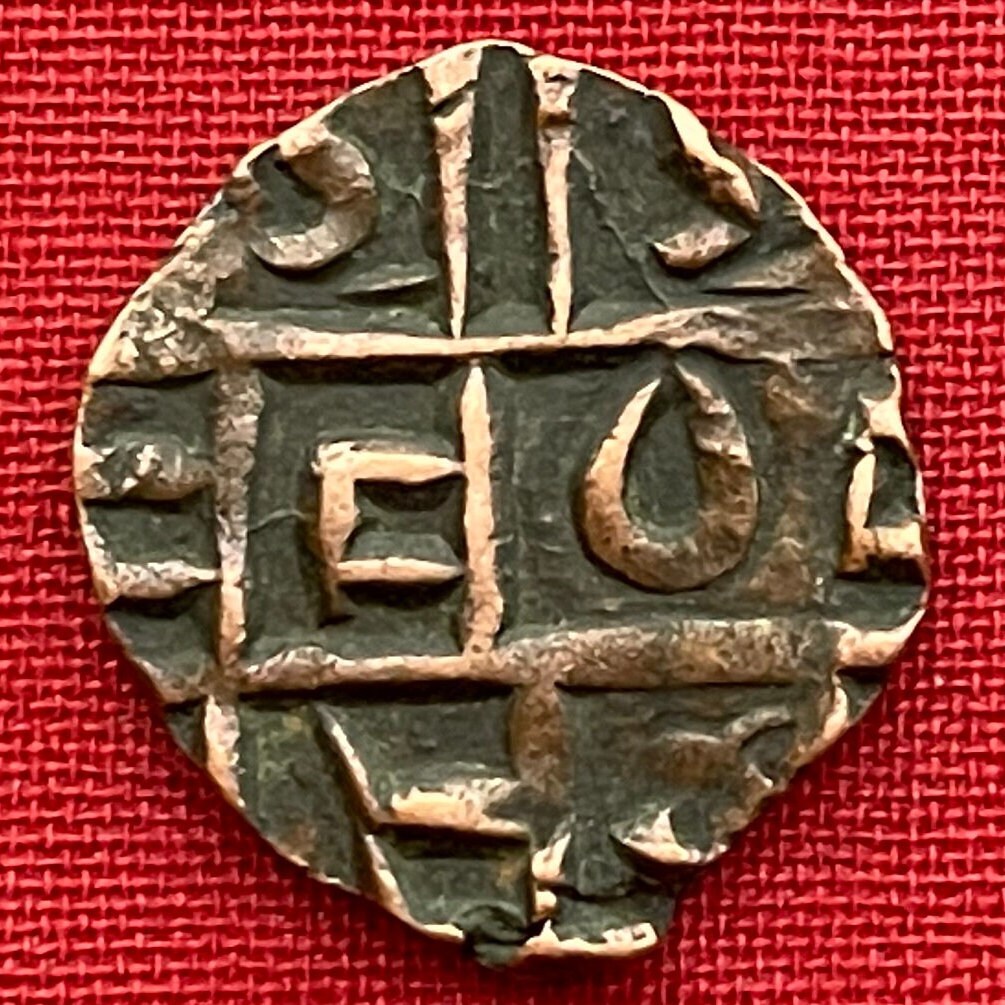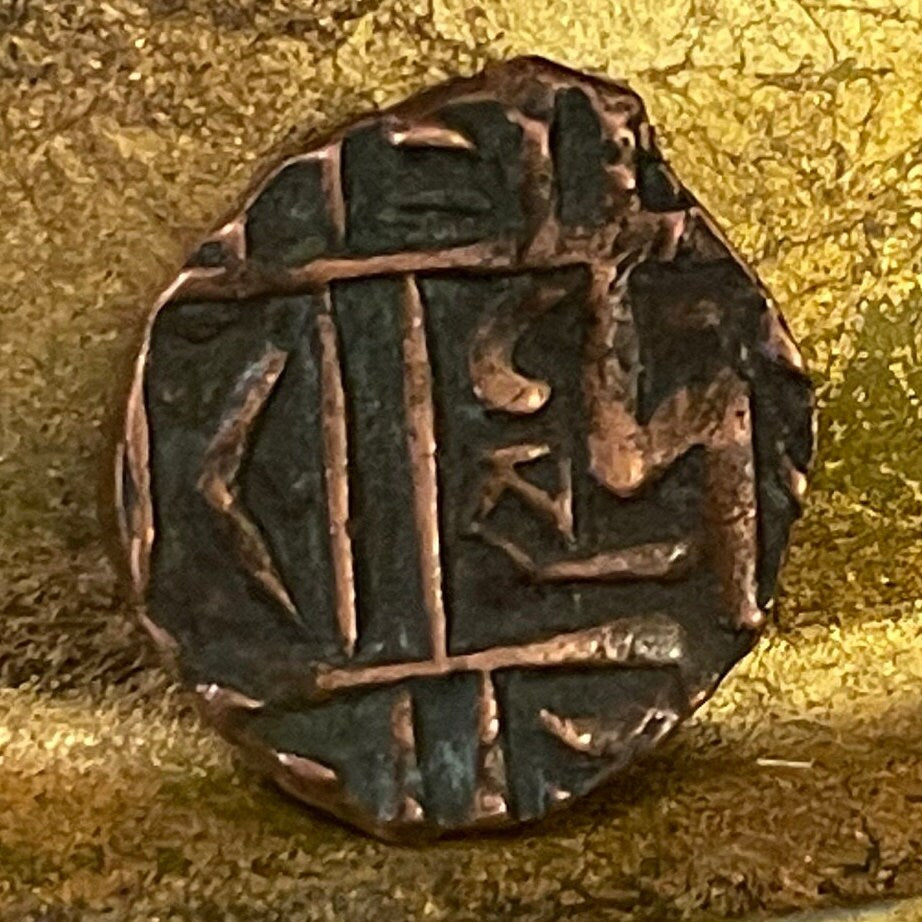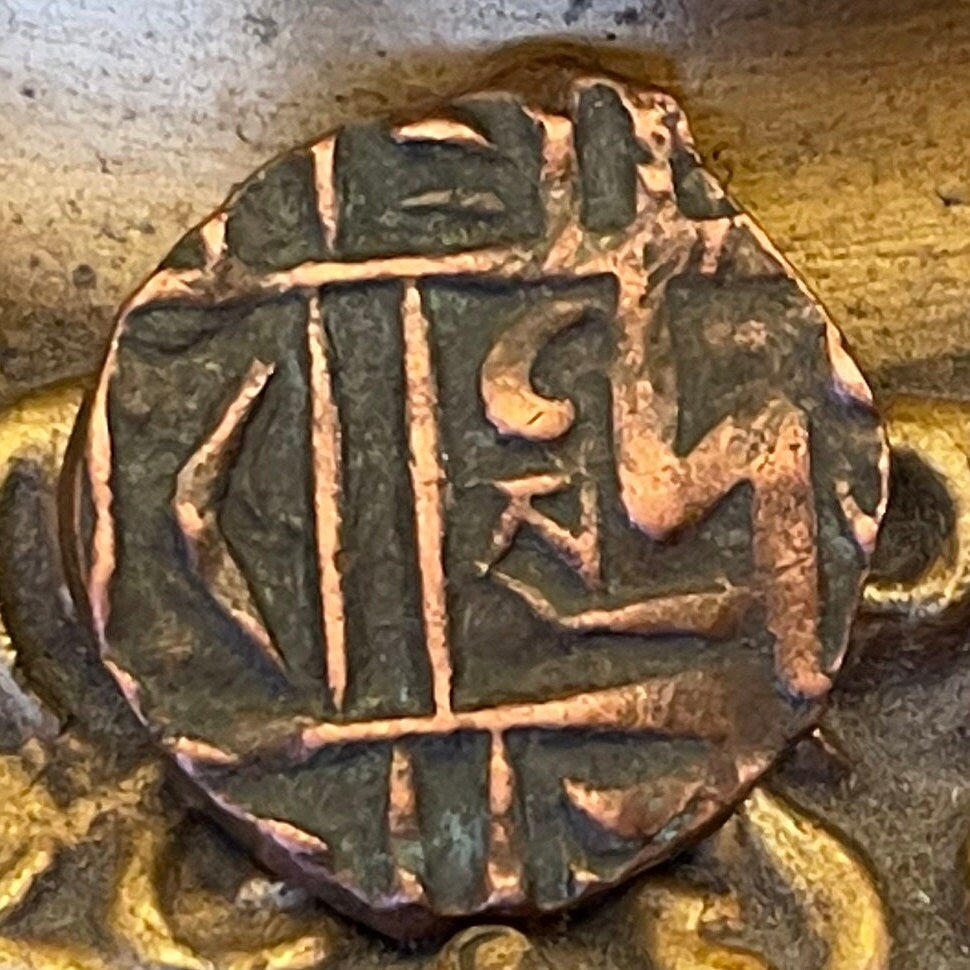elemintalshop
Vedic God Indra, Ruler of Heaven and Earth Deb Half-Rupee Bhutan Authentic Coin Money for Jewelry (Hammered Coin) (Crescent Moon) (Zigzag N)
Vedic God Indra, Ruler of Heaven and Earth Deb Half-Rupee Bhutan Authentic Coin Money for Jewelry (Hammered Coin) (Crescent Moon) (Zigzag N)
Couldn't load pickup availability
God Indra, Ruler of Heaven and Earth Deb Half-Rupee Bhutan Authentic Coin Money for Jewelry And Craft Making (Dragon Kingdom) (Hammered Coinage) (Crescent Moon) (Zigzag N) Thunderbolt
Obverse: The letter "Sa" ["Earth"], beneath a Crescent Moon. "Sa" sits on top of the "Ra" portion of the large zig-zag compound-syllable "Ndra" [the name of the God "Indra"].
(The God Indra's thunderbolt is named Vajra. A viśvavajra or "double vajra" appears in the emblem of Bhutan.)
Features
Issuer Bhutan
Ruling authority Third Period (1835-1910)
Type Standard circulation coin
Years 1835-1910
Value 1/2 Rupee / Deb (0.5)
Currency Hammered coinage - Rupee (1789-1927)
Composition Copper (copper or brass)
Weight 4.028 g
Diameter 22 mm
Shape Round (irregular)
Demonetized Yes
Number N# 36109
References KM# 8
Wikipedia:
Indra (/ˈɪndrə/; Sanskrit: इन्द्र) is an ancient Vedic deity in Hinduism. He is the king of Svarga (Heaven) and the Devas (gods). He is associated with lightning, thunder, storms, rains, river flows and war. Indra's mythology and powers are similar to other Indo-European deities such as Jupiter, Perun, Perkūnas, Zalmoxis, Taranis, Zeus, and Thor, showing connections to hypothesized Proto-Indo-European mythology.
Indra is the most referred deity in the Rigveda. He is celebrated for his powers, and as the one who kills the great evil (malevolent type of Asura) named Vritra who obstructs human prosperity and happiness. Indra destroys Vritra and his "deceiving forces", and thereby brings rains and the sunshine as the friend of mankind.
...Indra's weapon, which he used to kill the evil Vritra, is the Vajra or thunderbolt. Other alternate iconographic symbolism for him includes a bow (sometimes as a colorful rainbow), a sword, a net, a noose, a hook, or a conch.
...The Buddhist cosmology places Indra above Mount Sumeru, in Trayastrimsha heaven. He resides and rules over one of the six realms of rebirth, the Devas realm of Saṃsāra, that is widely sought in the Buddhist tradition. Rebirth in the realm of Indra is a consequence of very good Karma (Pali: kamma) and accumulated merit during a human life.
***********
BHUTAN – Deb Half-Rupee
The tiny Himalayan kingdom of Bhutan has been called the “Dragon Kingdom”. It was established as a priestly monarchy in 1652. ... It started to strike its own coins about 1790, after the British East India Company closed the Cooch Behar mint. The undated coins, denominated as Deb (1/2) Rupees, were originally good silver; however by about 1840 the coins became heavily alloyed with lead and then copper. The copper Deb Rupees continued to be struck until about 1910. … Though the basic design remained unchanged, there are numerous varieties….
Source: http://numis.org/coins-of-the-month/
********
Before the 1950's, there were no urban communities in Bhutan, and coins only played a small part in the economy of the country, serving mainly as a store of value, and as ceremonial gifts or donations. … Day to day life mainly involved subsistence farming, supplemented by barter. Taxes were paid either in kind or in services, and land rent was paid as a share of the produce, again in kind.
…The coins that it is reasonable to attribute to the period from about 1820 to 1870, or even later, fall into two main groups. The first group has a dot to the right of the letter Ndra and the second group has a cross. … Most of the coins of this group have a letter Sa on the obverse…
…In both silver and base metal, the coins with Sa ("Earth") are the most common of all Bhutanese coins, and are found in large numbers, struck from innumerable different dies. The common features are the horizontal lines, the prominent letters Ndra na ( ) on the obverse.... The parts of the legend above and below the horizontal lines, and on the left and right extremities of the design vary, and often depart from the original prototype in a more or less illiterate manner, and even parts of the common features of the design are occasionally engraved in mirror image. …
The precise significance of the letter Sa is unknown, but it must have something to do with “land”. Many old personal seals of Bhutanese officials have the letter "Sa", so it was probably intended to distinguish coins issued by one of the most important issuing authorities, possibly the Desi, or one of the Dzongpens.
Source: COINAGE IN BHUTAN, Nicholas Rhodes - Journal of Bhutan Studies
http://www.moneta-coins.com/library/Bhutan%20Coinage_Rhodes.pdf
Share










My token arrived on time, met my expectations and looks better in person. I'd recommend purchasing this coin to anyone that's interested.
I bought 14 coins from this shop, so will not write a unique review for each coin, but I will say that everything came in fantastic shape and is exactly as described. Thank you for offering such a great variety of authentic and great quality coins.
These are really interesting and appealing historical items with a great story behind them. Everybody loves them, Thank you!
5 stars review from Madonna
Fabulous! I just love that I had this one converted to a necklace.









